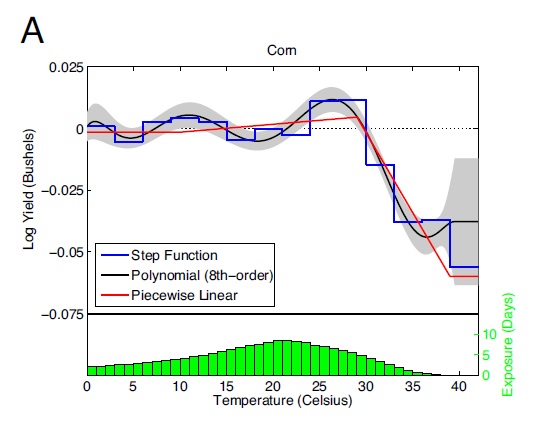I wish I’d had a chance to write on this topic earlier, but travel to the West Coast for work last week and working on my research this week prevented me from taking the necessary time to read everything I could find on food prices, digest it all, and write something worth reading on the topic.
The crop season started out nicely this spring, with corn producers setting out to cultivate almost 100 million of acres of corn, the largest cultivated area in 75 years. At the beginning of summer, however, things took a turn for the worst, with many areas experiencing both drought and extreme temperature.
Worry about Extreme Temperatures, Not Drought
Before anything else, I’d like to make one thing clear: Rather than drought, it looks as though it is extreme temperature that is the problem.
Indeed, according to my colleague Mike Roberts at NC State, drought is a poor predictor of crop yields, whereas extreme temperature — defined as the number of days for which temperature exceeds 84.2 degrees Fahrenheit — does a much better job of predicting crop yields.
The impact of temperature on crop yields looks like this (see the original research article here):

In other words, though there is a roughly linear relationship between temperature and corn yields from about 10 to about 29 degrees Celsius (i.e., from about 50 to about 84.2 degrees Fahrenheit), at which point corn yields drop sharply.